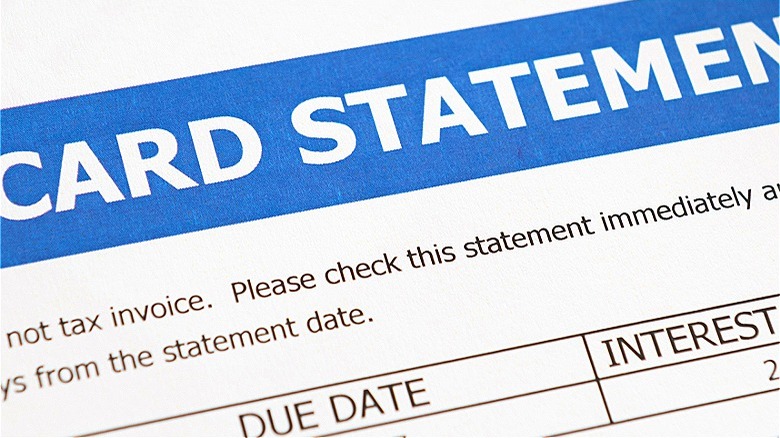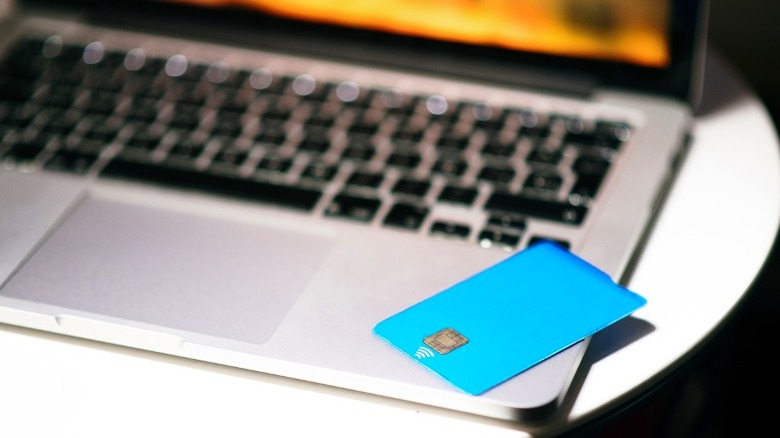The Drawbacks Of Paying Off A Loan With A Credit Card
It might be tempting to think of all lending products as one and the same. After all, calling on borrowed funding is done virtually the same way, no matter how you slice it; and repaying your debts takes the form of regular, monthly payments in nearly every lending relationship.
But borrowers shouldn't get complacent when strategizing their use of a wide range of lending products. They're absolutely different when considering classifications and borrowing product types. Credit card balances and loan repayments are virtually polar opposites when considering the behavior and obligation type that borrowers create for themselves. A credit card is a revolving loan that can ebb and flow, with no set end date or definitive repayment figure; instead, based on utilization, these features change on a routine basis.
A loan, on the other hand, is a steady borrowing product that comes with agreed-upon terms. Transforming debt from one type to another is certainly possible, and many people have utilized consolidation loans, balance transfers, and other offers to change their debt structure. However, thinking long and hard about exchanging a loan for credit card repayments is crucial when approaching this option. It shouldn't be a decision made lightly.
Repayment is typically more expensive
Perhaps the most consequential drawback of using a credit card to pay off a loan comes in the form of interest rates. Generally speaking, credit cards will be marked by far higher interest rates than any other loan type. Consolidating debts or utilizing any other avenue to move repayments from one lender or lending product to another requires some kind of beneficial trade off. While you might find temporary relief through an introductory rate offer, on the whole, a credit card repayment is marked by astronomical interest rate adjustments.
Moving a loan onto a credit card will see you paying the remainder of the debt with the added consequence of a much more costly set of interest charges. The average personal loan rate stood at 12.18% in April 2024, per Bankrate, while credit card APRs for cards with a balance was 22.63% in February 2024, per the Federal Reserve. The higher cost of borrowing through a revolving line of credit makes it a no-go for anyone seeking to translate an existing debt into more manageable monthly payments for a less costly repayment obligation over the long term. Using a credit card simply isn't going to cut the mustard.
Loans come with end dates, credit card payments don't
Loans have a unique advantage built into them that goes beyond the ongoing cost of managing the debt, too. Credit cards provide a consistent utilization opportunity that allows borrowers to charge all kinds of expenses to the accounts (without exceeding their limit) and then make repayments. Loans, meanwhile, operate on a different drawdown and repayment schedule altogether. With a loan, you'll take out the funding in a lump sum or multiple withdrawals according to a predetermined schedule. What you do with those funds is largely up to you, but repayments begin immediately after the funds are transferred, in most instances. However, unlike a credit card, loans come with a preset term limit.
You may have borrowed money for a project around the house or to buy a new car and will make repayments over two, three, or even five years. As for mortgage loans, they can last over the span of 40 years today. (Find out what your mortgage should be based on your monthly income.)
In the past, mortgage borrowers were obligated to stick with their repayment schedules, but today, early repayment can be done without penalty in all but the most specific cases (the practice largely went extinct in 2014 when the ability-to-repay provision from the 2010 Dodd-Frank Act went into effect). Regardless of your management strategy, a loan will be paid off on or before a predetermined end date as long as you keep up your monthly payments. Credit cards don't enjoy this rock-solid schedule and repayment on a credit card debt can stretch out over an incredibly lengthy period of time.
That temporary, 0% rate won't last forever
Borrowers who utilize balance-transfer offers and other introductory-rate incentives may be on to something when utilizing a new or existing credit card to pay off their high-interest debt. In certain circumstances, this can even include existing loans that showcase interest rates higher than the offer rate on a credit card account. However, in order to take full advantage of such debt consolidation opportunities, you'll need to pay off the loan in full before the end of the promotional period.
Credit card companies offer these incentives because they know life can become complicated in a hurry and the best-laid plans can begin to unravel with low monthly payments attached to the offers. When other obligations get in the way, it's incredibly easy to allow one or more months to go by while contributing just the minimum to your promotion-applied balances. The temporary reprieve from the full weight of high interest debt won't last forever, though, and your credit card company is counting on a balance left over once this clock strikes midnight. After the promotional rate ends, you'll be on the hook for the full interest rate associated with spending on the card, typically far higher than the interest adjustment you started with.
Credit cards may come with higher minimum payments
Minimum payments are calculated based on the interest added to your credit card balance and a percentage of its total value. Every card will utilize a different accounting of these figures to come up with a monthly payment obligation, and it's entirely possible you will end up paying more by moving a debt. (This is what happens when you only make the minimum payment on your credit card.)
On the flip side, debt consolidation loans are typically structured in a way that helps a borrower move one or more high-interest credit card balances(s) into a single lower-cost alternative. A lower interest rate and reduced monthly payments make debt consolidation loans an attractive option for borrowers. The result is a loan with favorable terms when compared to the original credit card obligation.
Many lending products showcase this relationship, and you'll often find lower monthly payment requirements on loans of all sorts than the monthly contribution required by the same balance on a credit card. Moreover, while you might be counting on a steady reduction in the minimum payment required, once interest charges are tacked on at the end of every billing cycle, you may find this progress slowed to a standstill.
You may end up with added fees
Finally, not all credit card companies will allow you to transfer loan balances directly, and some creative thinking may be required to achieve this goal as a result. Most cards offer cash advances and similar financing options that can function as reasonable workarounds. Depositing funds into your account and then using the proceeds to pay off the loan is something that can be accomplished, even if a direct transfer of debt isn't available. However, in order to achieve this you'll likely be looking at the addition of fees to the cost of your funding. Whether it comes through a balance transfer or cash advance offer, you're likely going to have to foot the bill for some added expenses. In many cases this can add up to as much as 5% of the money moved.
Depending on how much you owe a creditor, transferring debt from one lending product to another can be extremely costly and raise the overall price tag up above a threshold of acceptability. And this can occur even before the first month of interest is levied against the newly exchanged balance. Before making any alterations to your debt structure, make sure you fully understand the entirety of costs associated with the maneuver. It's possible you'll be getting yourself into an even greater hole by utilizing your credit card to eliminate a loan.





